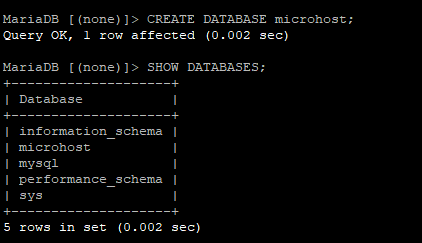How to Install MariaDB 10.3 on Ubuntu 20.04

Introduction
In this article, you will learn how to install MariaDB 10.3 on ubuntu 20.04.
This is to Install MariaDB 10.3 on Ubuntu 20.04. MariaDB is a database management system that is a fork of MySQL. It is extremely similar to MySQL, which is a database management system. Several different applications, including data warehousing, e-commerce, enterprise-level features, and logging programmes, all make use of the MariaDB database.
MariaDB will let you to fulfil all of your burden in an effective manner; it can function in any cloud database and can function at any scale, whether it be little or huge.
A database is a repository for information that can be easily retrieved and applied in the context in which it is required. When compared to recording information on a piece of paper or in a Word document, storing all of your information in a database allows it to be organized into tables, making it simple to retrieve each individual entry in a manner that is both systematic and accurate.
Install MariaDB APT repos on your Ubuntu 20.04 server by following the instructions below and executing the commands.
# apt update
# apt install software-properties-common dirmngr apt-transport-https ca-certificates -y
# wget -qO- https://mariadb.org/mariadb_release_signing_key.asc | gpg --dearmor > /etc/apt/trusted.gpg.d/mariadb.gpg
# echo 'deb [arch=amd64,arm64,ppc64el,s390x] https://atl.mirrors.knownhost.com/mariadb/repo/10.7/ubuntu focal main' > /etc/apt/sources.list.d/mariadb.list
Install MariaDB 10.3 on Ubuntu 20.04
# apt install mariadb-server mariadb-client -y
You can use the command to check the version of MariaDB that is currently installed;
# mysql -V
Now, using the following command, check the current status of mariadb.
# systemctl status mariadb

Run the mariadb-secure-installation script, which assists you in protecting your MariaDB database server.
# sudo mariadb-secure-installation
Enter current password for root (enter for none): Press Enter
Switch to unix_socket authentication [Y/n] : Press y
Change the root password? [Y/n] : Press y
Remove anonymous users? [Y/n] : Press y
If you choose you wish to let root login remotely, then press the y key; otherwise, press the n key.
Reload privilege tables now? [Y/n] : Press y
A username and password combination should be required in order to access the MariaDB shell.
# mysql -u root -p
# CREATE DATABASE microhost;
# SHOW DATABASES;

Executed the following command To make changes take effect without reloading or restarting mysql service, you can use the flush privileges command to reload the grant tables in the database.
# FLUSH PRIVILEGES;
# exit
Conclusion
Hopefully now you have Installed MariaDB 10.3
Thank You 🙂